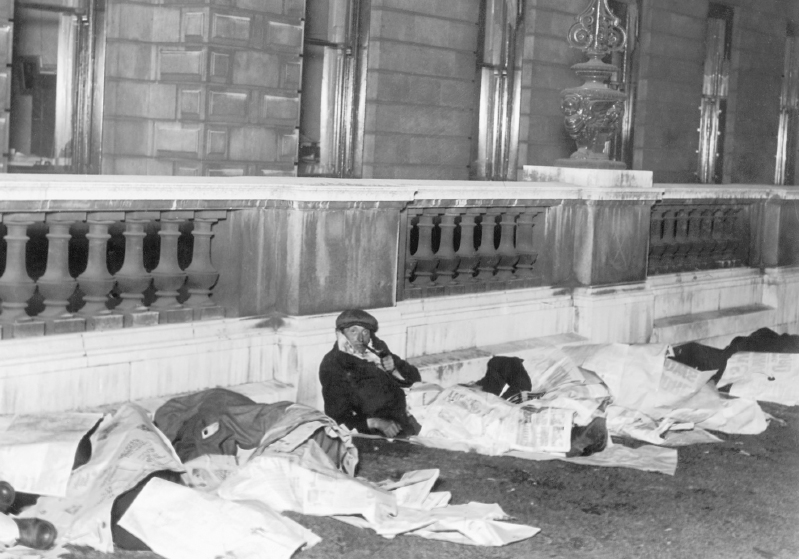Understanding Western Society
Printed Page 831
| > | What were the causes and consequences of the Great Depression? |

Homelessness in LondonThe Great Depression of the 1930s disrupted the lives of millions across the United States and Europe. The frustration and agony of unemployment are evident in this common scene of homeless Londoners wrapping themselves in newspaper against the cold. (Mary Evans Picture Library/The Image Works)
TTHE FRAGILE OPTIMISM OF THE LATE 1920S was short-
The social and political consequences of the Great Depression were enormous. Mass unemployment and failing farms made insecurity and unemployment a reality for millions of people (Map 26.1). The prolonged economic collapse shattered the fragile political stability of the mid-

MAP 26.1 The Great Depression in the United States and Europe, 1929–1939 These maps show that unemployment was high almost everywhere, but that national and regional differences were also substantial. > MAPPING THE PASTANALYZING THE MAP: Which European countries had the highest rate of unemployment? How do the rates of people on unemployment relief in the United States compare to the percentage of unemployed workers in Europe? In the United States, what were the main channels of migration?CONNECTIONS: What tactics of reform and recovery did European nations use to combat the deprivations of the Great Depression?